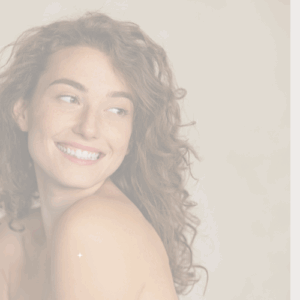March Special: iS Clinical Prodigy Peel P2 & P3
This month we have two new peels that we recently added to the menu here at Abbracci Med Spa,
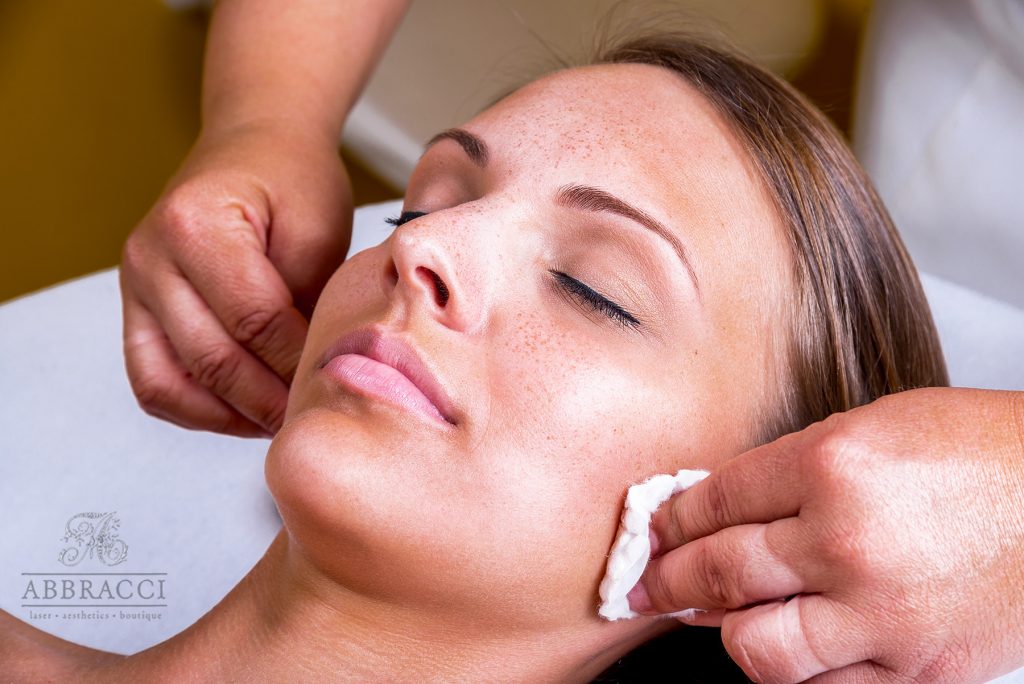
This month we have two new peels that we recently added to the menu here at Abbracci Med Spa, and we are so excited about both of them!
First of all, what is a peel and how can it help me?
Chemical peels use topical ingredients to remove layers of skin cells, which in turn stimulates the natural exfoliation process and skin renewal. When we use chemicals to exfoliate, it is induced by a type of controlled damage that results in molecular changes, and ultimately, more youthful skin that is regenerated by the process. After the peeling process is complete, in 7 -10 days, there is usually an improved appearance to the skin with fewer wrinkles, improved pigment irregularities, improvements in acne and scarring and a healthful, more youthful appearance.
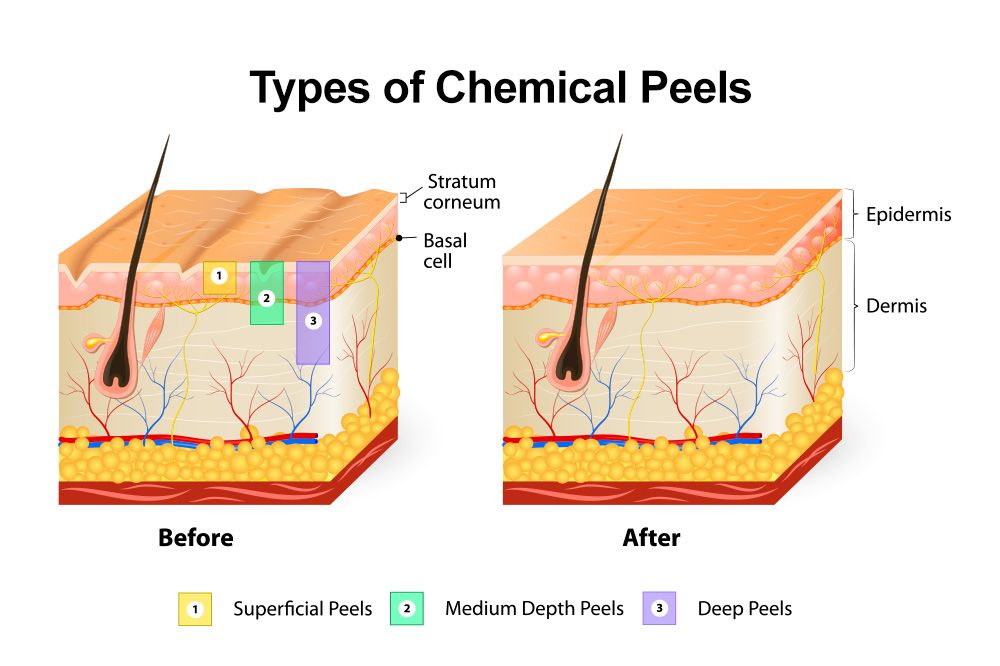
Chemical peels are available in different grades, essentially, light (superficial), medium or deep, depending on the depth they penetrate into the skin. Some chemical peels are aggressive and you will notice your skin actually peel. With other, lighter peels, the peeling may not be visible to the eye. Depending on your skin type, you may not actually see your skin peel after a light or medium grade peel, but peeling can occur without actual visible manifestation of the peeling process.
The Fitzpatrick Scale of Skin Type
It is our job to determine what kind of skin our clients have and the grade of peel that will work, without being too aggressive. To do this, we use a system called the Fitzpatrick Scale of Skin Type. The Fitzpatrick scale is a numerical classification for human skin color, and it was developed by Thomas B. Fitzpatrick as a way to estimate the response of different types of skin to ultraviolet (UV) light (essentially, how long it takes your skin to burn without protection). It remains the leading tool for dermatological research into skin pigmentation.
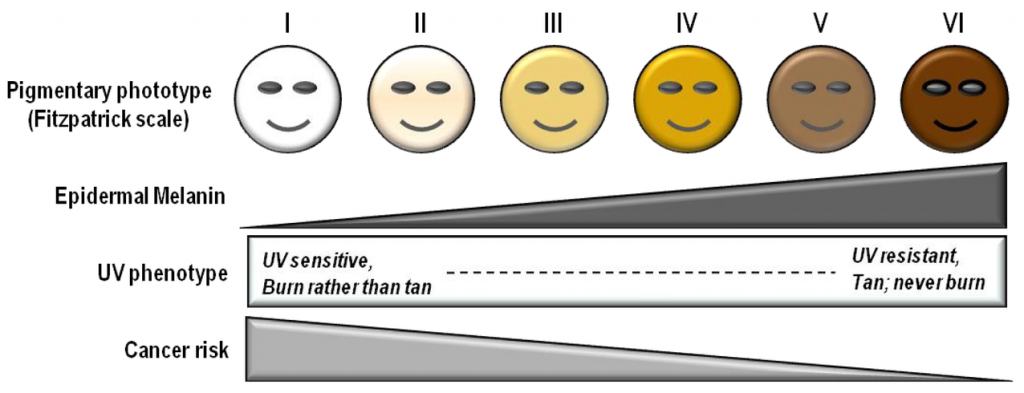
(source: John D’Orazio et al. “UV Radiation and the Skin” Int. J. Mol. Sci. 2013, 14(6), 12222-12248; doi:10.3390/ijms140612222 )
The categories are as follows:
- Type I (scores 0–6) always burns, never tans (palest; freckles).
- Type II (scores 7–13) usually burns, tans minimally
- Type III (scores 14–20) sometimes mild burn, tans uniformly
- Type IV (scores 21–27) burns minimally, always tans well (moderate brown)
- Type V (scores 28–34) very rarely burns, tans very easily (dark brown)
- Type VI (scores 35–36) never burns (deeply pigmented dark brown to darkest brown)
Understanding your skin type helps us better understand how you will respond to treatments and any potential complications that might develop.
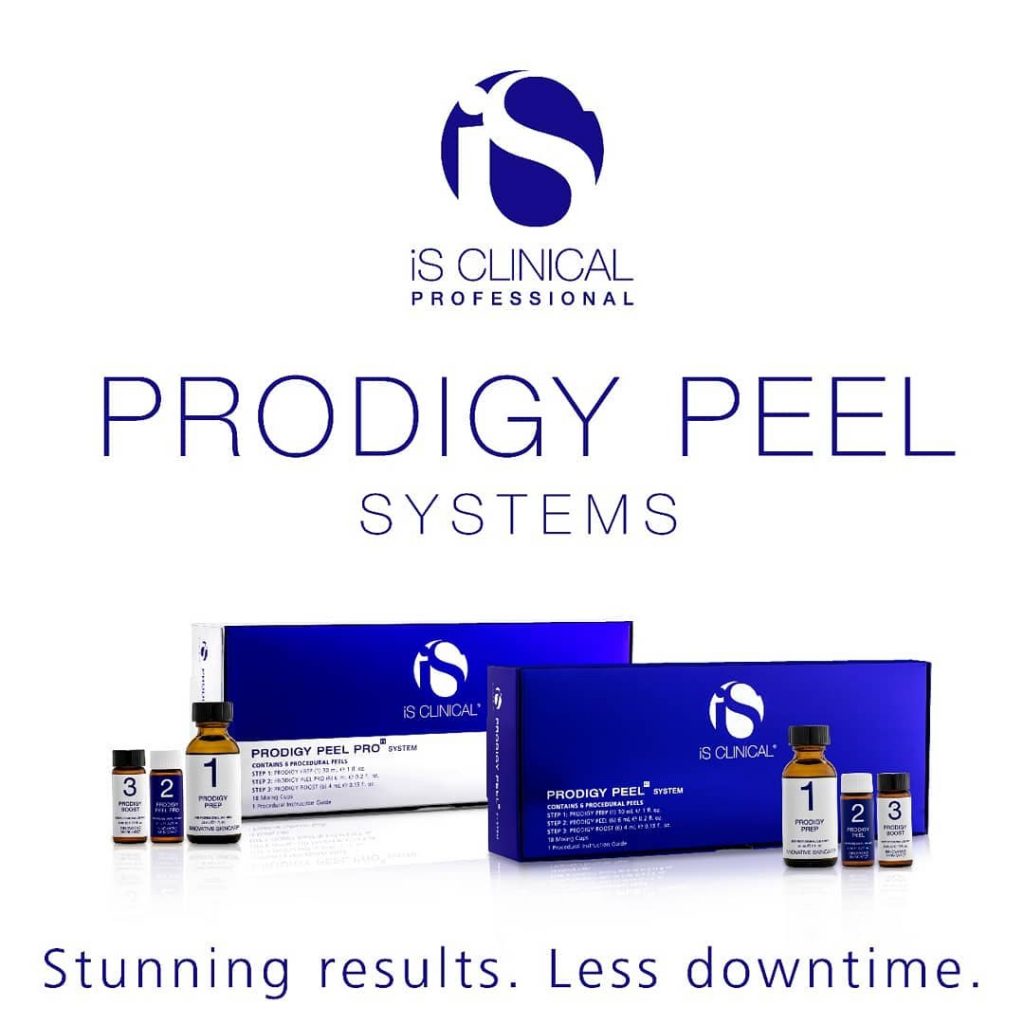
The Prodigy Peel System by iS Clinical
iS Clinical recently released two new chemical peels, The Prodigy Peel System P2, and The Prodigy Peel System P3. We’ve been working behind the scenes learning and testing these two new treatments for several weeks and now we are thrilled to be releasing them to our clientele. Both of these peels are 100% medical grade, which means they must be performed by a licensed medical esthetician.
The Prodigy Peel System P2 combines resorcinol, lactic acid, salicylic acid, and citric acid to target multiple skin concerns ranging from mild to moderate aging, mild acne and pigment irregularities. These acids are combined with a powerful ‘booster’ which features an advanced form of salicylic acid, enhancing the benefits when compared to other peels. The unique formulation allows for a decreased chance of pigment irregularities and can it can therefore be used on all skin types, including darker skin tones.
The Prodigy Peel System P3 combines resorcinol, lactic acid, and salicylic acid together with a powerful booster that features an advanced form of salicylic acid, which provides a medium-depth chemical peel, which results in a brighter and more youthful complexion. This chemical peel works to target skin laxity, acne, hyperpigmentation, fine lines and wrinkles, and uneven skin texture. It can be used on all skin types but is better suited to Fitzpatrick types I, II and III. It is particularly beneficial to individuals with hyperpigmentation, aging, and blemish-prone skin.
What’s the difference between the two peels?
Both peels are similar in their application and feature witch hazel to prepare the skin for the second step, the actual peel. Both peels use resorcinol (a keratin hydrogen disrupter that prepares the skin for peeling and helps to remove excess pigmentation), lactic acid and salicylic acid, but the P3 system uses an advanced form of salicylic acid which is designed to maximize cell renewal at a deeper level. And finally, both peels feature the booster, which contains retinol (an antioxidant that encourages healthy collagen and cell turnover), capryloyl salicylic acid (an advanced form of salicylic acid in a unique lipid-soluble formula that removes debris from the pores and enhances smoothness) and hexylresorcinol (an ingredient that has powerful lightening properties with the ability to lift uneven pigment) to encourage collagen production and protect against UVB and UVA damage.
How do I know if I’m a candidate for these peels?
Due to the chemical nature of these procedures, the following individuals are excluded:
- Pregnant or possibly pregnant
- Breastfeeding
- Any active cold sores, Herpes Type I or II, or warts in the treatment area
- Open wounds, sunburned or excessively sensitive skin
- Allergies to aspirin or salicylates
- Vitiligo
- History of autoimmune diseases, or any history of immune deficiency
- Any inflammatory dermatitis, including rosacea, seborrheic dermatitis, or lupus
- Hyperpigmentation related to any prior use of hydroquinone-containing products.
It is also necessary to avoid the following 1 week prior to treatment:
- Laser hair removal or electrolysis
- Waxing
- Depilatory creams
- No skin products that contain a 100% ethyl alcohol base, such as Cleocin topical antibiotic
- Exfoliation products or facial treatments that have been irritating, including dermaplaning and microdermabrasion
- All Retinoids and Retin-A products
48 hours before receiving the Prodigy Peel, please avoid any neurotoxin treatment (i.e. Botox, Dysport or Xeomin).
We are also unable to perform this treatment on anyone who is currently, or has in the previous year, used Accutane or had chemotherapy or radiation therapy.
What is the downtime, and what to expect during and after this treatment?
As with any chemical peel, you can expect some mild tingling and/or a warming, burning sensation after the peel and booster are applied. We use a fan during the procedure which helps to cool the skin.
Post-peel, you will need to avoid sun exposure, and no products (other than the SPF we apply at the conclusion of the peel) should be applied to the face until the evening. At that time, you may wash with a gentle cleanser and pat your skin dry. A recovery serum may be used, such as iS Clinical Recovery Balm or SkinCeuticals Phyto Corrective Gel or Phyto Corrective Masque.
The skin will begin to peel within 2 days, and it is very important to not scratch, pick or peel the skin. The flaking skin should fall off on its own. There may be some redness, remember the skin is very sensitive at this point and it’s very important to stay out of the sun and apply sunscreen daily! The peeling should begin to subside within 10 days.
This peel can be repeated, but the frequency depends on the patients’ response to the chemical peel solution and our assessment of the reaction to the peel. It’s best to avoid this treatment in the summer as we tend to spend more time outside and in the sun.
It’s important to note that healthy skin takes approximately 28 days to go through a full cycle of natural exfoliation and recovery. Aging and severely photo-aged skin may take longer for recovery & renewal (up to 8 weeks) and over-exfoliation may damage the skin further.
What is the price for these peels?
The Prodigy Peel System P2 is regularly priced at $199. This month, we are offering it for $175.
The Prodigy Peel System P3 is regularly priced at $279. This month, it is being offered at $249.
We are loving the results we are seeing from these two peels, and they both stimulate the natural exfoliation process and production of collagen that helps diminish the appearance of fine lines, wrinkles, and uneven skin tones. We realize this is a lot of information, and we are happy to discuss these treatments with you in person or by telephone to determine if you are a good candidate for one of them, so please call us at 310-375-0717 with any questions.
